Masoudieh Mansion: A Must-Visit Historical Palace
Have you ever envisioned yourself as royalty, wandering through halls adorned with splendor and grace? Visit the Masoudieh Palace, also known as "Emrat-e Masoudieh, a captivating treasure nestled in the historic center of Tehran.
This magnificent mansion, built on a sprawling four-thousand-square-meter area in the late 19th century, is a testament to the grandeur of the Qajar dynasty. It was Commissioned by Masoud Mirza, the son of King Naser-al din of the Qajar dynasty, and this palace stood witness to the turbulent constitutional revolution that shaped Tehran in the early 20th century.
Masoudieh Palace housed the first national library and the first national museum in Iran. Over time, it served as a center for military education, culture, and history. Today, Masoudieh Palace stands as a popular tourist attraction in central Tehran.
Follow us to explore the beauty and grandeur of Masoudieh Palace and delve into its history, opening hours, entrance fees, location, and how to get there.
Interested in visiting Masoudieh Mansion?
Check out our Tehran tour packages to find an itinerary that includes visiting the mansion
or...
Design your own tailor-made itinerary and include Masoudieh Mansion in it by yourself, today!
Masoudieh Mansion History
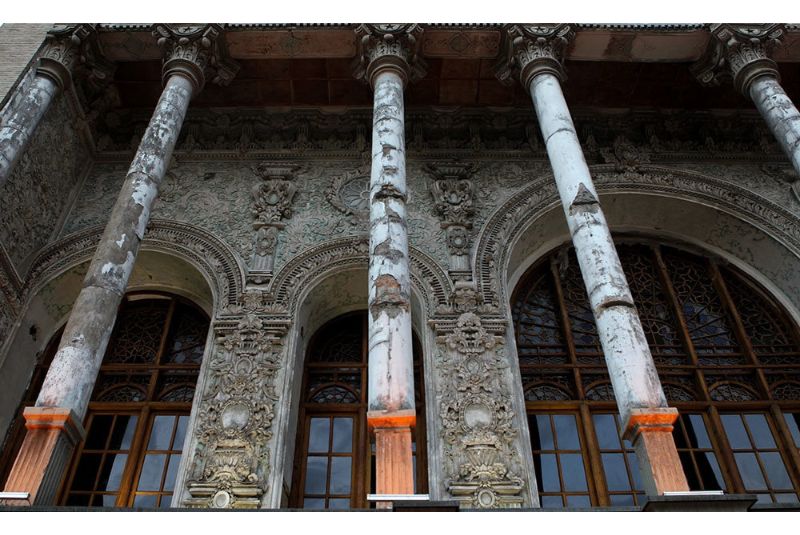
The Masoudieh Palace, located in the center of Tehran, has a remarkable history that spans several significant events. It was commissioned in 1878 by Masoud Mirza, the son of King Naser-al Din of the Qajar dynasty and the governor of Isfahan. However, after Masoud Mirza's death, the palace was used for various purposes by his descendants.
During the Iranian Constitutional Revolution from 1905 to 1911, the palace played a pivotal role as a gathering point for revolutionaries. It became a base for constitutionalists and opponents of Mohammad Ali Shah, contributing to the disputes between Zal-ul-Sultan, Muzaffar al-Din Shah, and Mohammad Ali Shah. In 1908, an improvised explosive device detonated near the mansion under Mohammad Ali Shah's carriage, leading to the dissolution of the Parliament.
In 1926, the palace became home to the first official library, which later evolved into the National Library. It also housed the first Iranian museum, although some antique collections were later relocated to the newly established National Museum. To this day, Masoudieh Palace still retains some of its antique artifacts.
In 1967, the palace was repurposed as the Ministry of Education. Ten years later, in 1977, it received Cultural Heritage status and underwent renovation. The complex was transformed into a beautiful garden with the addition of shops and cafes, enhancing its appeal.
On March 1, 1998, the government officially transferred ownership of the palace to the organization operating under the Ministry of Culture and Islamic Guidance. As a testament to its historical and cultural significance, Masoudieh Palace was listed as a national heritage site of Iran on January 17, 1999, bearing the registration number 2190.
Why is this Mansion Called "Masoudieh"?
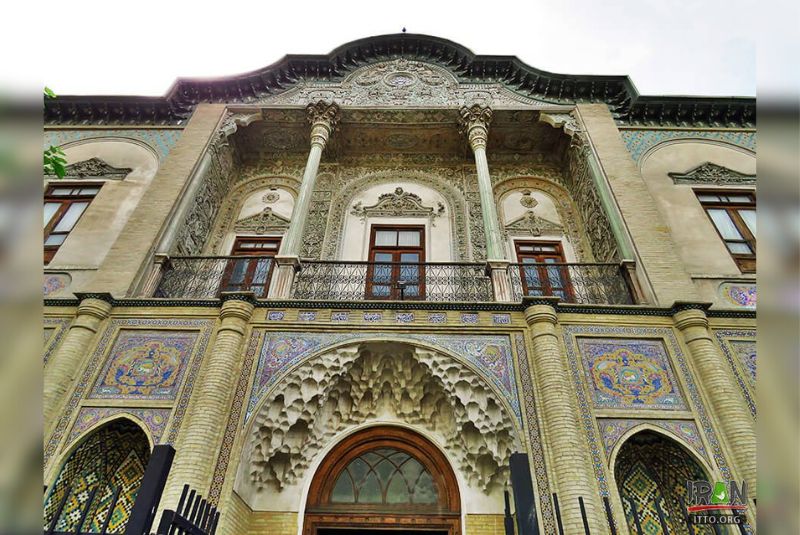
The name "Masoudieh" for the mansion has its roots in the Qajar era. At that time, Masoud Mirza, the ruler of Isfahan, commissioned the construction of a mansion in the Nezamiyeh Garden in Tehran. As the owner and patron of the mansion, it is fitting that it came to be known as Masoudieh Mansion, named after Masoud Mirza himself.
Architecture of Masoudieh Mansion
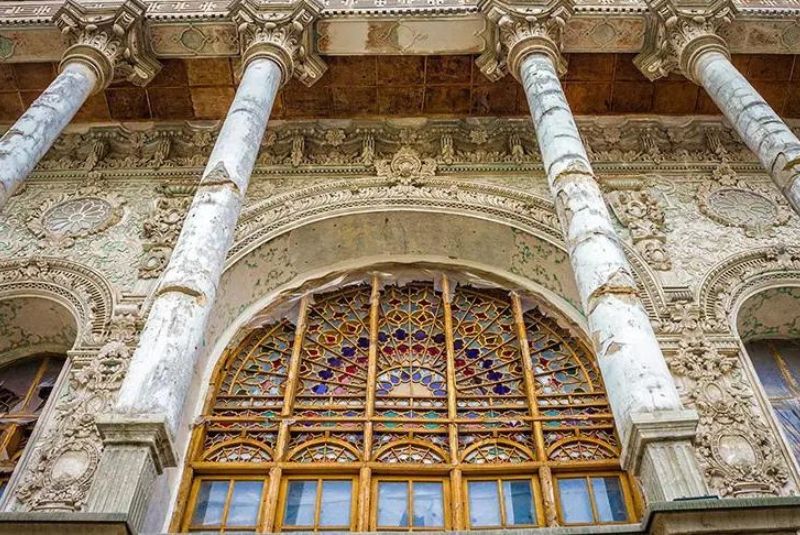
Masoudieh mansion is situated in a 50,000 square meter garden, featuring the main palace and other notable structures such as a forum, restaurant, spring house, Seyed Javadi Mansion, Moshir al-Molk Mansion, and an entrance hall. The architectural style of the palace exhibits the influence of European architecture, which can be attributed to the Shah's travels abroad and the increasing number of Iranian students studying in Europe during that era.
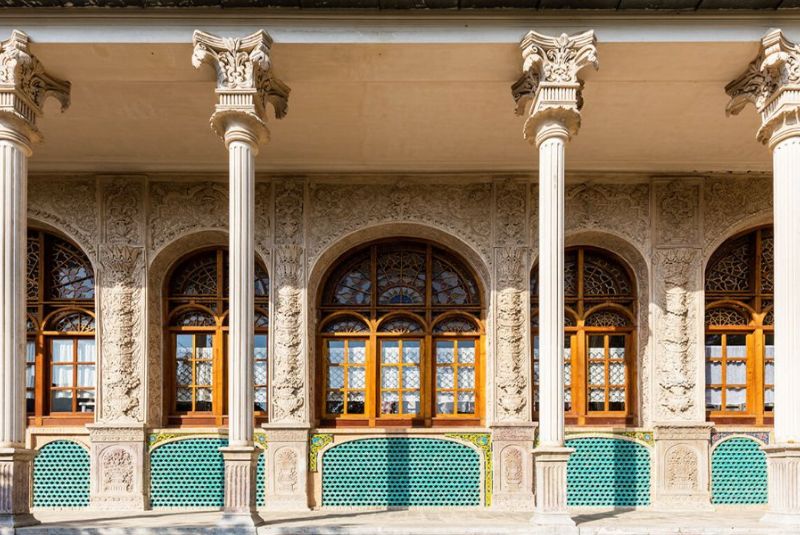
Upon entering the complex, visitors are greeted by the Divankhaneh Palace, the first building they encounter. This structure embodies the principles of transparency, lightness, and openness that marked a new direction in Iranian architecture. The presence of gridded windows allows ample fresh air and sunlight to permeate the rooms. Additionally, the incorporation of natural patterns, floral forms, and landscape ornaments contributes to the palace's fresh and European-style aesthetic. These features make Masoudieh Palace a noteworthy and distinctive example of Qajar architecture.
| Read more: Iranian Modern Architecture - Tradition & Innovation Blend
Different Sections of the Masoudieh Mansion
Masoudieh Mansion, located in Tehran, consists of various sections that showcase the rich history and architectural beauty of the Qajar era. Although the interior part of the mansion is now in ruins, there are still magnificent sections that compensate for its absence. Let's explore the different parts of this historic building.
1. Seyyed Javadi's Courtyard and Mansion

This section is named after Sayyid Javadi, a prominent figure during Mas'ud Mirza's time. Sayyid Javadi played a crucial role in saving Mas'ud Mirza's life during a hunt. The mansion, also known as the Chamber of Ministers, has undergone restoration and renovation.
2. Divankhaneh Mansion
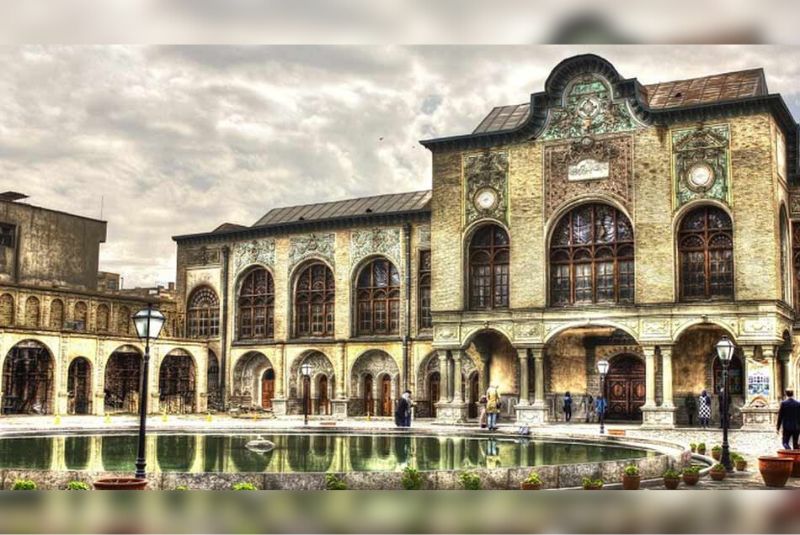
The Divankhaneh Mansion is the central building of the Masoudieh Mansion. It is adorned with beautiful mirrors and provides a pleasant atmosphere. Mas'ud Mirza used this mansion to accommodate special guests.
3. Safar Khuneh Mansion
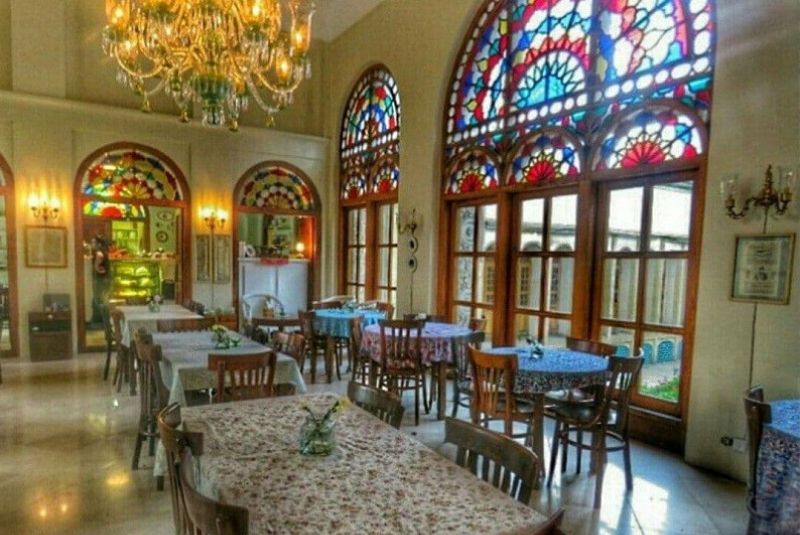
Located on the south side of Masoudieh Mansion, the Tableau House served as an open space for celebrations, parties, and important events during the Qajar era.
4. Pond House

Each courtyard within the mansion features a pond that showcases the architectural elements of Masoudieh Mansion, such as brick arches, columns, plastering, tiling, and stained glass. The Hawzkhaneh mansion is situated in the southernmost part of the complex.
5. Backyard of Masoudieh Mansion
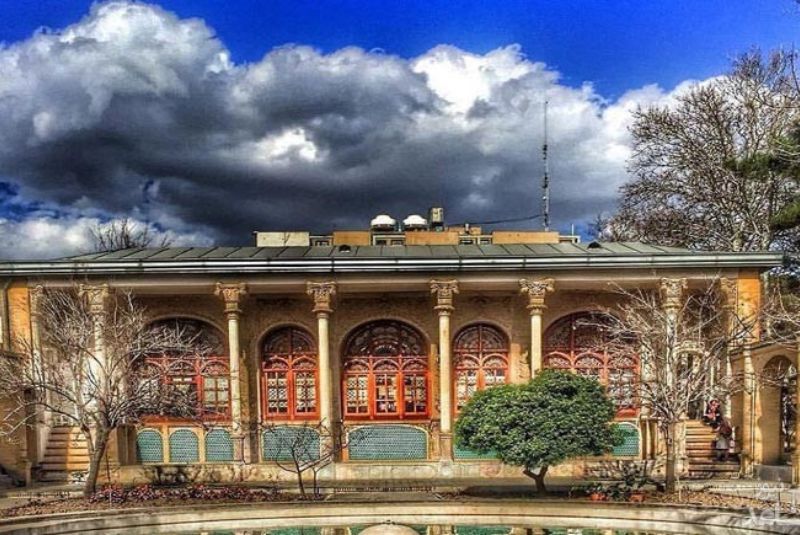
On the other side of the main entrance, you'll find the backyard of Masoudieh Mansion. This area boasts a water pool and a garden adorned with beautiful flowers, adding natural beauty to the surroundings.
6. Moshiri Mansion
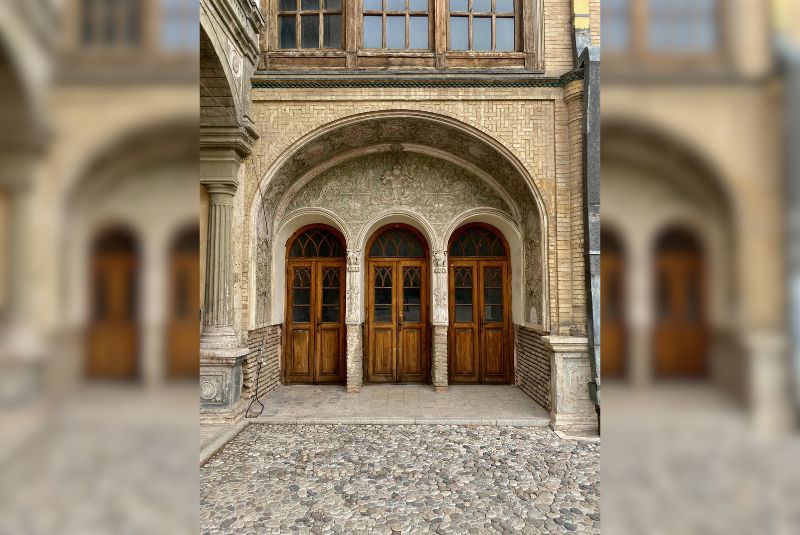
The Moshiri Mansion is a section of the Masoudieh Mansion built for the stewards during the Qajar era, including Mas'ud Mirza, Habibullah Khan, and Mohammad Baqir Khan.
7. Sardar Mansion
To visit one of the oldest mansions in Masoudieh, you must go to the Sardar Mansion. Although some sections have been restored in recent years, the building still exhibits old Qajar architecture. The rooms of Sardar Mansion were previously used for important government discussions.
8. Carriage Entrance
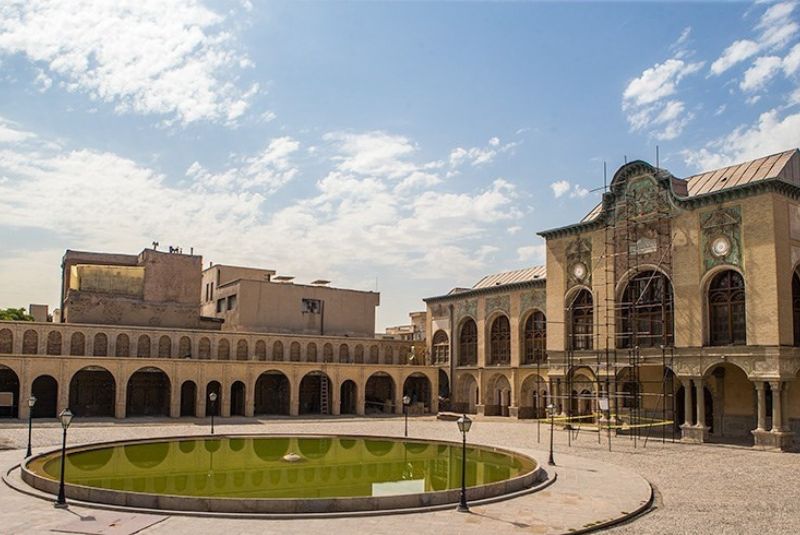
The Carriage Gate is adorned with beautiful Mogharnas decorations and serves as an entrance to the mansion. It also provides a routing function, allowing access to the street.
9. Masoudieh Theatre
Masoudieh Pavilion houses a theater known as the Theatre. It offers a venue for theater enthusiasts to enjoy performances. The theater can accommodate approximately 200 people.
10. Masoudieh Mansion Photoshop
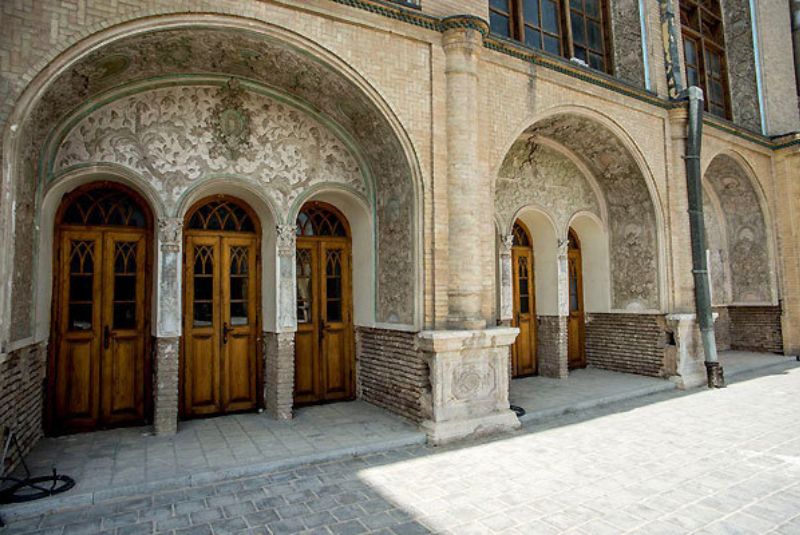
If you want to capture memorable moments in Masoudieh Mansion, visit the photo shop located downstairs. The studio provides traditional Qajar clothing to enhance the atmosphere of the era in your photos, making it a great way to conclude your tour of Tehran.
11. Masoudieh Café and Restaurant
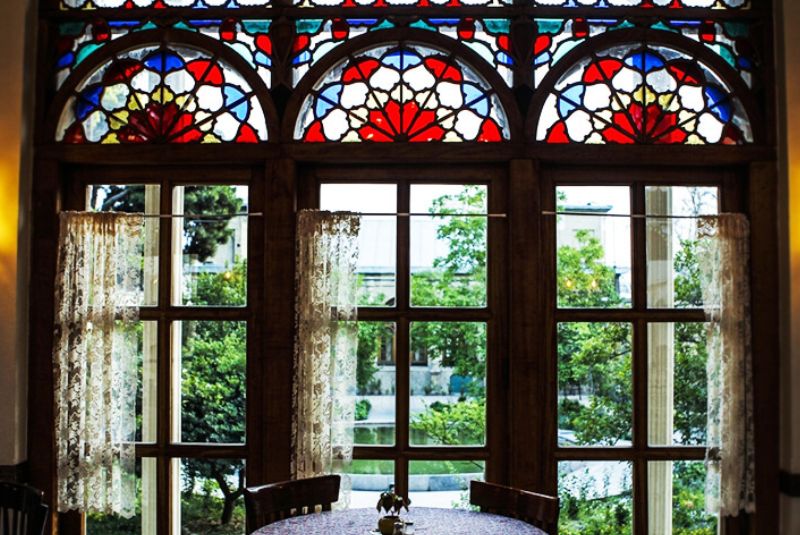
After exploring the mansion, indulge in the Qajar-era ambiance by visiting Masoudieh Café and Restaurant. Adorned with floral tablecloths, the restaurant offers a variety of traditional gourmet dishes that are sure to stimulate your appetite. The menu includes herbal brews, syrups, and traditional favorites like cutlet, soup, and coco. Prices may be slightly higher than other cafes, but the experience of dining in a place with a history spanning over 140 years is well worth it. It is recommended to visit during the first days of the week to avoid crowds.
12. Masoudieh Garden Area

Masoudieh's vast garden features lush green spaces, colorful plants, and a water pool, creating a pleasant atmosphere. The garden paths are covered with paved stones, adding to its charm and beauty.
In addition to these sections, Masoudieh Mansion has stores and galleries selling jewelry and handicrafts.
| Related: Tehran's Most Famous Palaces
Masoudieh Mansion Location
Masoudieh Mansion is conveniently located on Ekrabatan Street near Jomhuri Avenue, in close proximity to Baharestan Square, in the central part of Tehran. Its central location makes it easily accessible for visitors.
How to Get to the Mansoudieh Mansion
Masoudieh Mansion is conveniently accessible by various transportation modes in Tehran. Here are some options to reach the mansion:
- Metro: The easiest way to reach Masoudieh Mansion is by taking the metro. You can take Line 2 and get off at either Mellat or Baharestan Station. From Mellat Station, head southwest towards Ekbatan Street, and you will find Masoudieh Mansion. From Baharestan Station, walk to the southwest of Baharestan Square and continue on Ekbatan Street to reach the mansion.
- Bus: If you prefer to take the bus, you can board buses that pass through the Baharestan square, which will take you to Masoudieh Mansion.
- Walking: If you enjoy walking and want to explore the area, Masoudieh Mansion is located in a charming neighborhood near Negarestan Garden, Sardar-e Bagh-e Melli, and the National Museum. You can take a pleasant stroll from any of these nearby landmarks to reach the mansion.
It's worth noting that due to its central location and the bustling nature of Tehran's streets, using a private car may not be the most convenient option, as it could result in traffic congestion and time wasted.
| Related: Best Museums in Tehran - Definitive Guide
Attractions Near Masoudieh Mansion in Tehran
If you have the time and desire to explore the attractions near Masoudieh Mansion, you'll find some of the most important historical sites in Tehran. Here are some notable places to visit:
1. Negarestan Garden in Baharestan
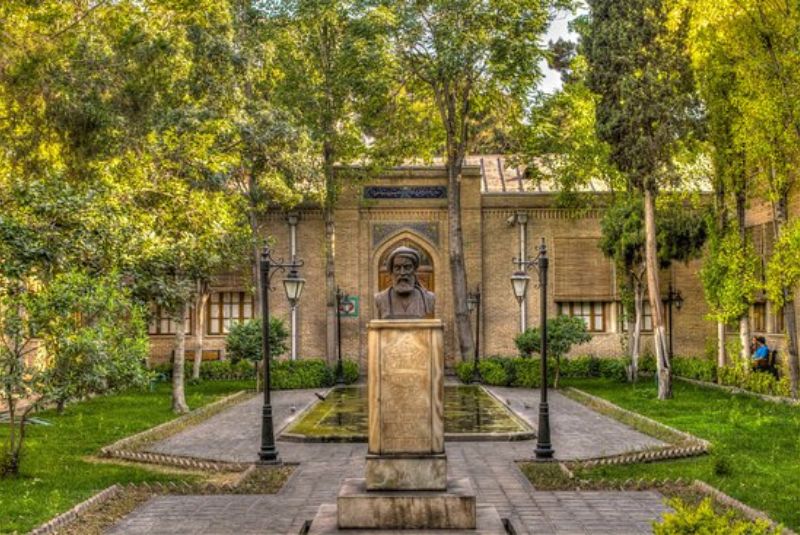
This Qajar-era garden showcases paintings depicting Fath Ali Shah in his lavish attire. It's a beautiful place to immerse yourself in the history of the era.
| Read the full article: Discover Negarestan Garden's Historic Charm
2. Amin Soltan Garden

Located on the old Lalehzar Street, this garden was frequented by foreign guests before the revolution. If you've seen the TV series "Uncle John Napoleon," you may recognize the atmosphere as it was filmed here.
3. Ostad Abolhassan Saba Museum

Situated in Baharestan Square, close to Masoudieh Mansion, this museum is dedicated to the life and work of Master Abolhassan Saba, a renowned Iranian musician. Explore the house's architecture, including a basement, five rooms, and a pool, and view Saba's personal and artistic belongings on display.
| Read the full article: Saba Home Museum - Iran's Melodic Echoes
4. National Museum of Art
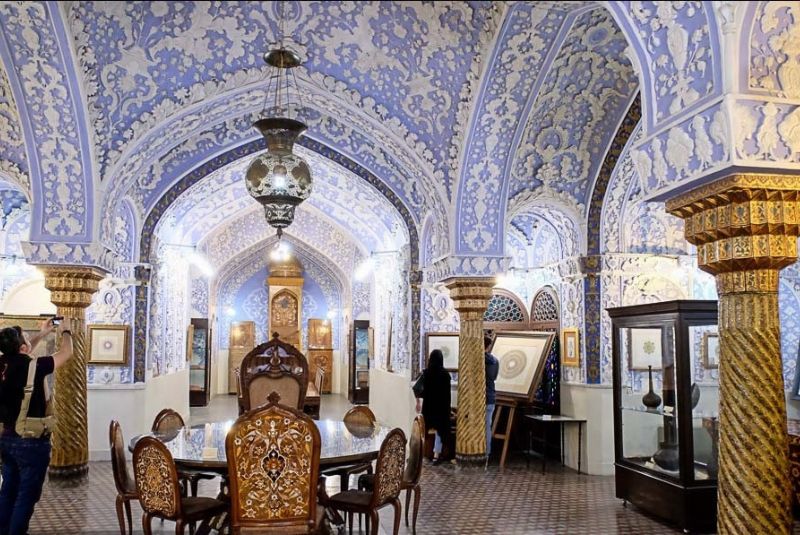
Just a few minutes away from Masoudieh Mansion, this museum houses a collection of valuable artworks, including paintings, miniatures, carpets, mosaics, carvings, and more.
5. Abgineh Museum on 30 Tir Street
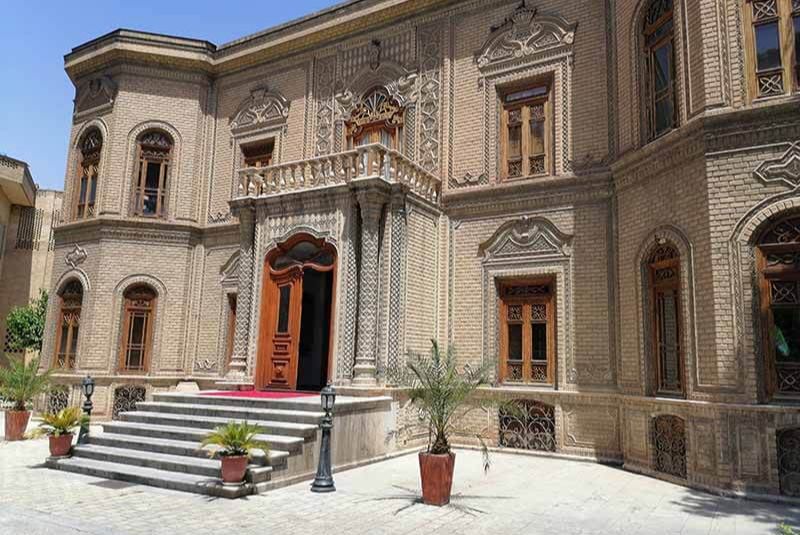
The first pottery and glass museum in Iran, the Abgineh Museum, showcases a fascinating collection of historical pottery and glassware. The museum's architecture reflects Russian influences and was commissioned by Ahmad Shah Qajar.
6. Sepahsalar Garden

This old Qajar-era garden was purchased by Mirza Husayn Khan Sepahsalar, the Chancellor of Nasser al-Din Shah. It offers a serene environment to enjoy and explore.
7. Artoukhaneh Square
Formerly known as Toukhaneh Square and now Imam Khomeini Square, this historic site was once a venue for political protests. Nowadays, it is primarily used for administrative and commercial purposes.
These attractions provide a glimpse into Tehran's rich history and cultural heritage, and their proximity to Masoudieh Mansion makes them easily accessible for visitors. Enjoy your exploration of these fascinating sites!
| Read more: Tehran National Garden Gate - Sardar-e Bagh-e Melli
Masoudieh Mansion Opening Hours
Masoudieh Mansion is open for visitation on all days of the week except on holidays. The mansion is accessible to visitors from 9 am to 4 pm.
Best Time to Visit Masoudieh Mansion

The best time to visit Masoudieh Mansion is during the early morning hours. During this time, you can enjoy a tranquil atmosphere, allowing you to immerse yourself in the beauty and stories held within its walls.
Additionally, visiting Masoudieh Mansion during the spring or winter seasons is highly recommended. These periods offer milder weather conditions and fewer crowds, enabling you to explore the palace with ease and fully absorb its architectural grandeur.
Entrance fee of Masoudieh Mansion
To visit the Masoudieh Mansion, visitors are required to pay an entrance fee. The entrance fee for Masoudieh Mansion is 5000 Tomans per person.
Bottom Line
Masoudieh Mansion is a captivating historical gem located in the heart of Tehran. This magnificent mansion showcases the opulence and splendor of the Qajar dynasty.
Built during the Qajar era, the mansion bears the name of Masoud Mirza, the ruler of Isfahan, who commissioned its construction. It housed the country's first national library and museum, serving as a center for education, culture, and military affairs.
Today, Masoudieh Palace stands as a popular tourist destination, allowing visitors to immerse themselves in its grandeur and explore its rich history. Don't miss the opportunity to explore the beauty and grandeur of Masoudieh Palace during your visit to Tehran.
Share your story!
Comment below and let us know about your Experience.
Your story inspires others!


Comment
Leave a Comment